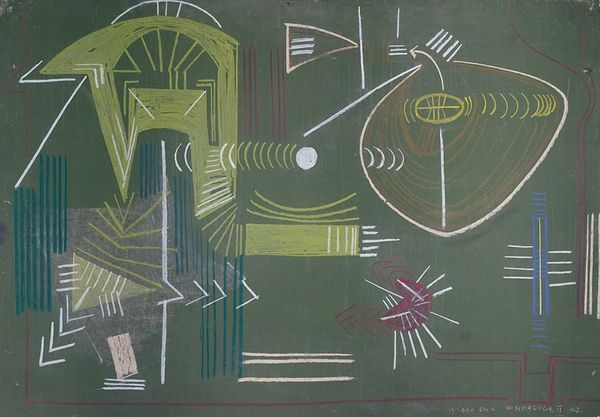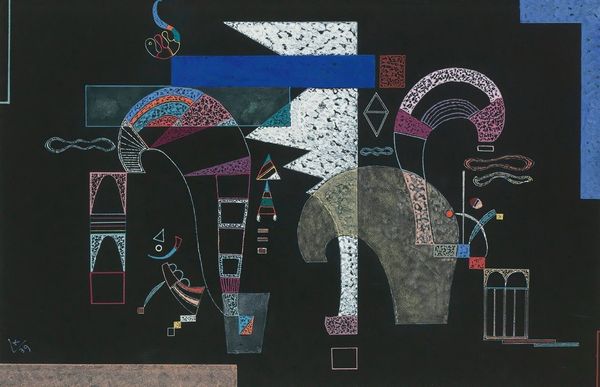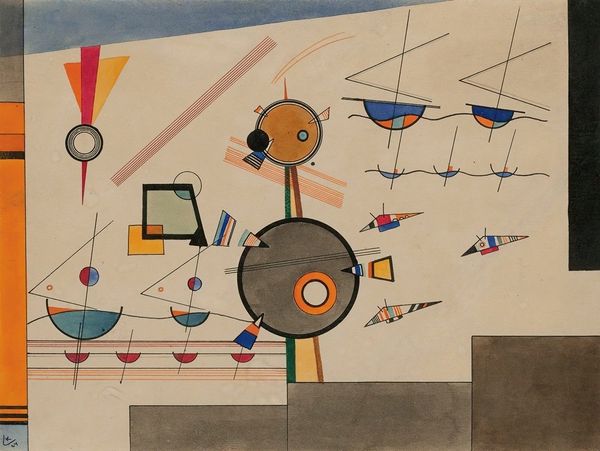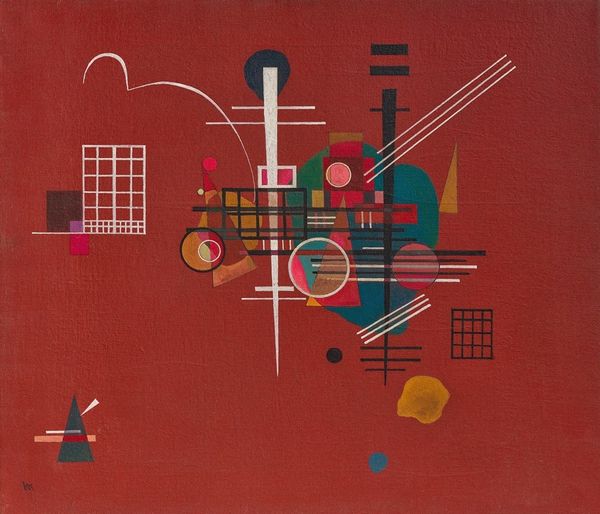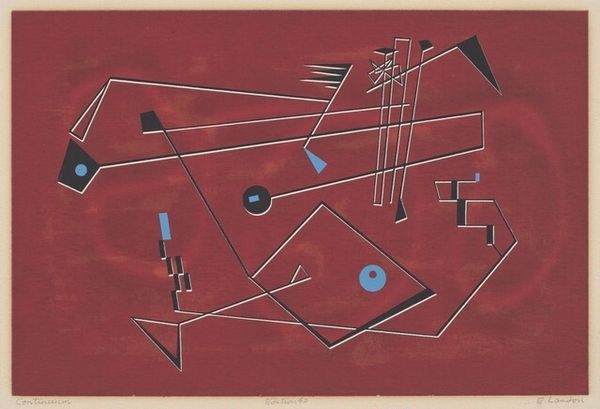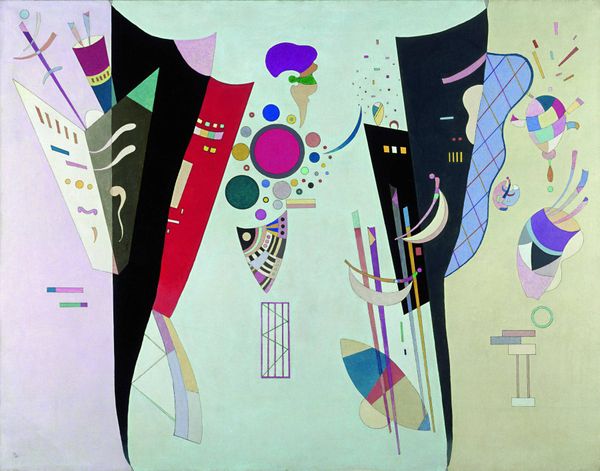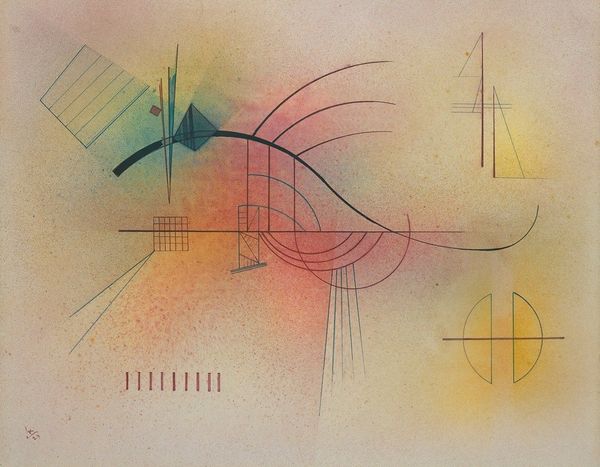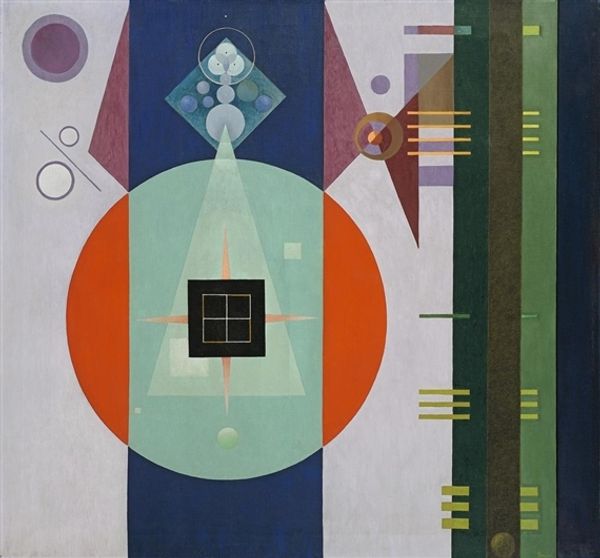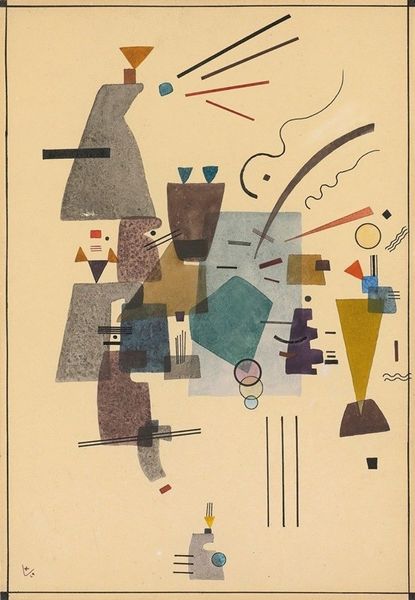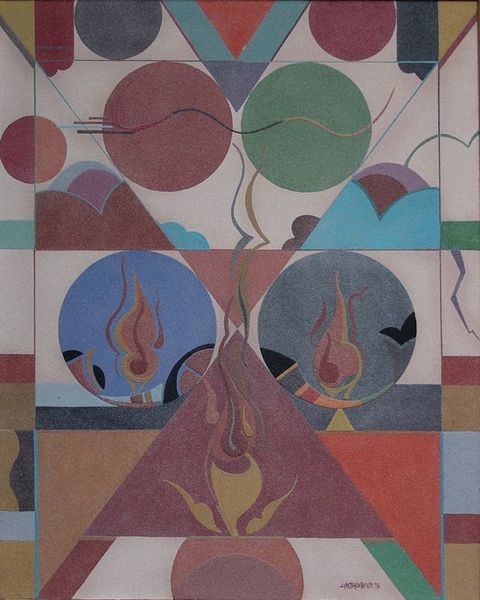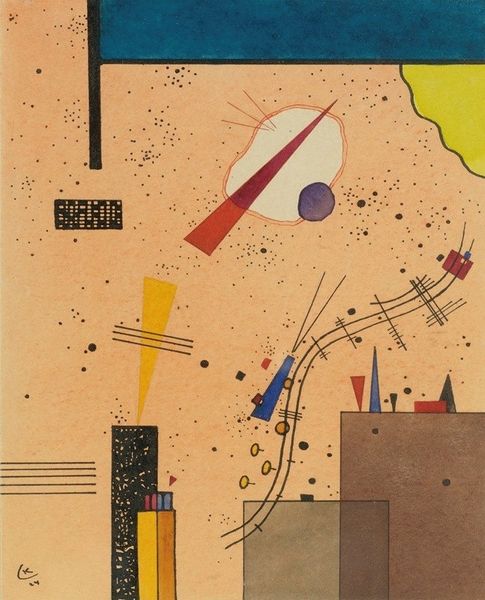
Copyright: Public Domain: Artvee
Wassily Kandinsky made this composition, Étude Pour ‘contrastes Réduits’, using paint on canvas. He was a synesthete, and believed that he could hear colours and see sounds, so, his paintings were his way of giving form to the immaterial and spiritual. Kandinsky builds up the image using very basic shapes such as circles, semi-circles, and triangles, set against a dark background. Notice how he has applied the paint, so it sits on the surface, giving texture to each shape. He applies an array of pastel colours to give a gentle quality to his abstraction. Kandinsky didn’t want to reproduce familiar imagery or forms. Instead, he wanted to free himself from these conventions to evoke his inner emotions. For him, it wasn’t enough to represent the external world. He sought a deeper, more spiritual language through his art. By focusing on material and process, we can see how Kandinsky pushed the boundaries of art by exploring his spirituality and using the materiality of paint to connect with the inner self.
Comments
No comments
Be the first to comment and join the conversation on the ultimate creative platform.
